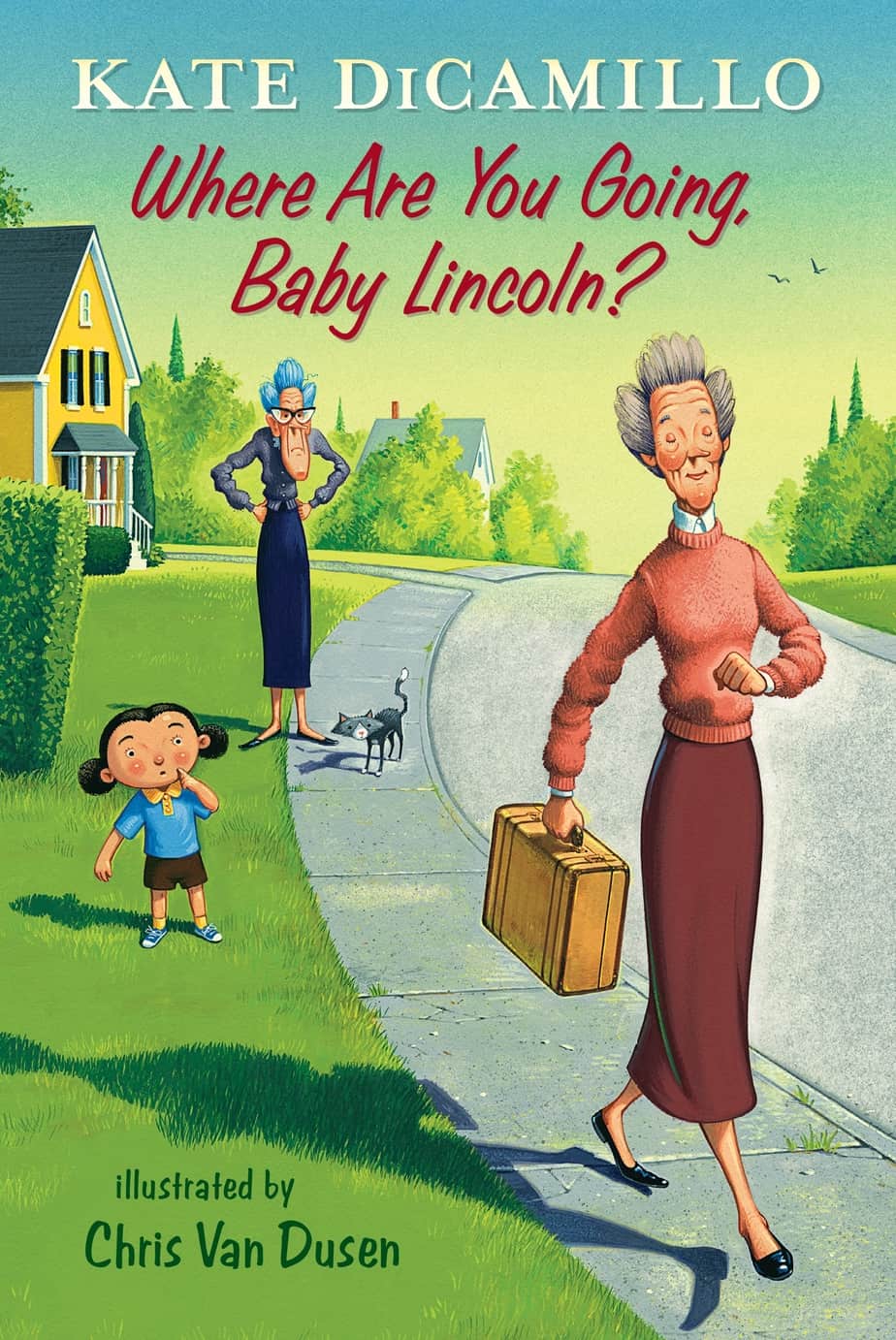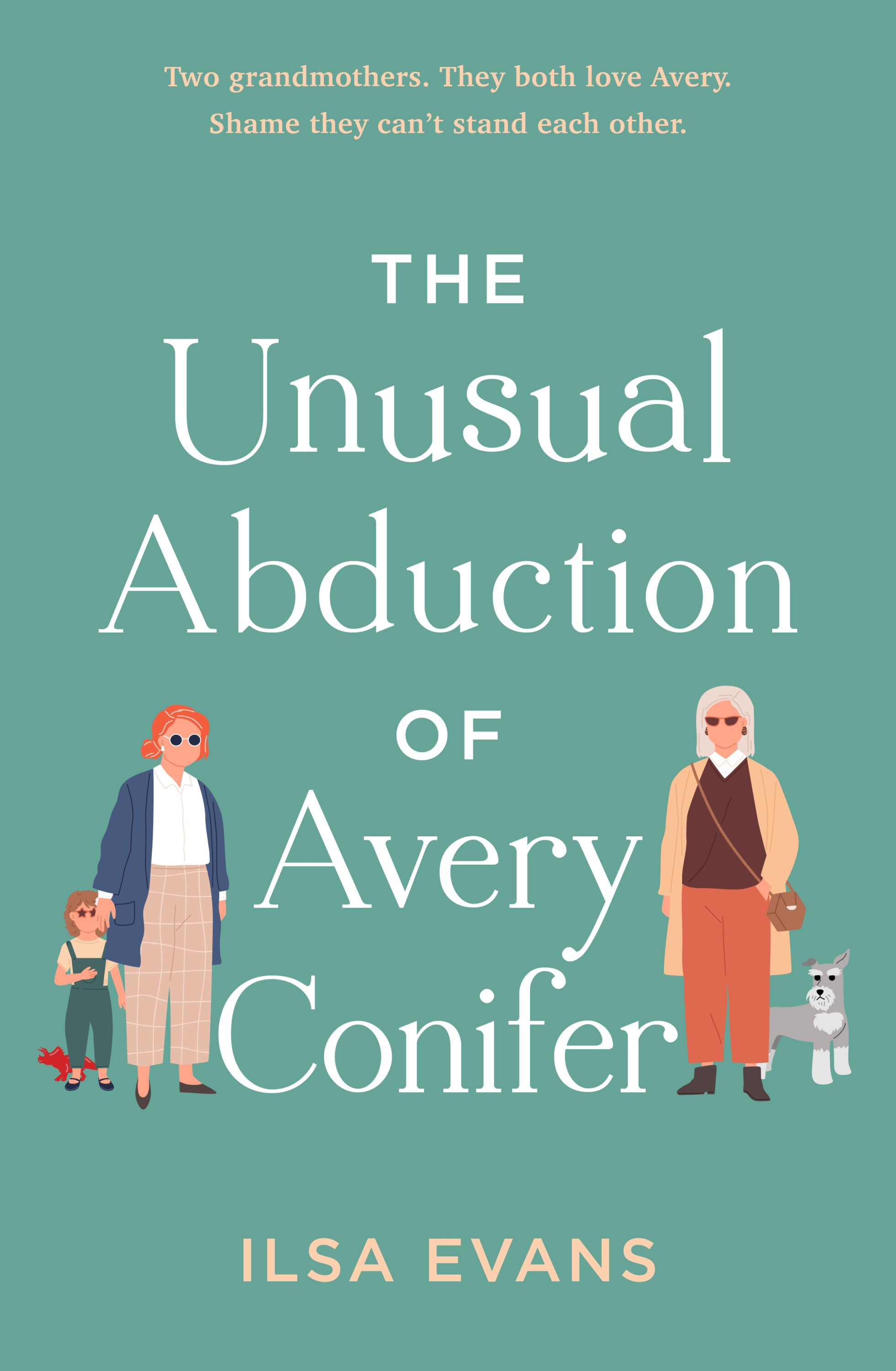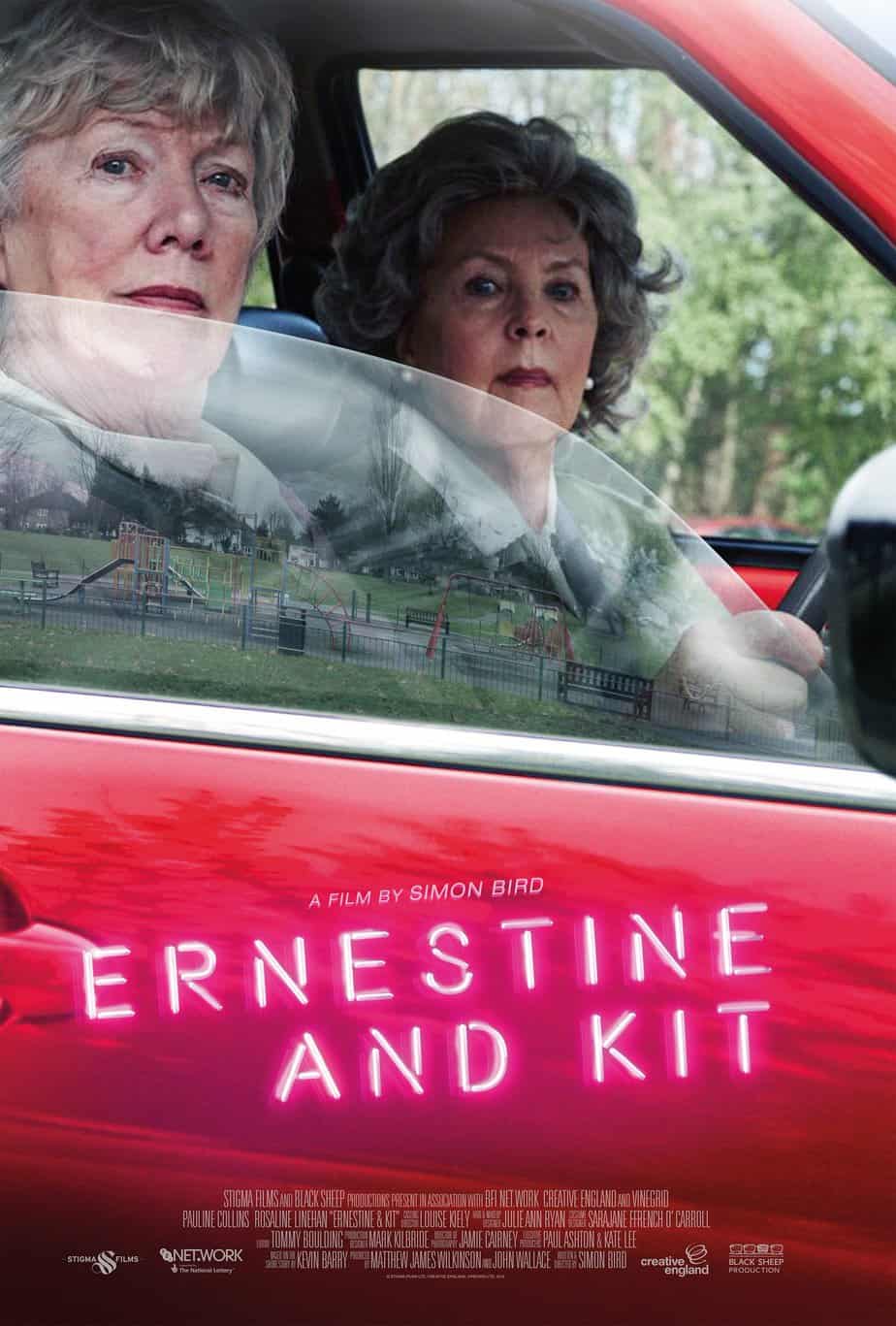“Ernestine and Kit” is a short story by Kevin Barry, included in Dark Lies The Island (2013). It has been made into a short film by Simon Bird if you can get a hold of it.
This is black humour at its best. I was captivated with this crime story from beginning to end — the suspense is well-paced, and the reveals well-positioned, because we don’t know at first what these two are up to. By the time we see the two women carry out their plan it comes as a bit of a shock.
COMPARE AND CONTRAST
“Ernestine and Kit” is sort of like Thelma & Louise meets “The Child” by Ali Smith. In fact, one of the children in “Ernestine and Kit” is called Allie, and I wonder if it’s a nod to Smith’s well-known short story, in which a woman finds a child in her supermarket trolley, takes it home and learns it’s a little bastard.
CHARACTERS OF “ERNESTINE AND KIT”
The fat lady/thin lady duo is pretty common across storytelling, which is useful for Kevin Barry because the reader will quickly form expectations from that.
For instance, we expect something light-hearted:
a fat and a skinny character make up a two-character ensemble. This is usually a comedy trope, usually with the skinny character being the Straight Man, although inversions of this are seen as well.
TV Tropes
Ernestine and Kit remind me of the women in Kate diCamillo’s Mercy series. Eugenia is phonetically similar to Ernestine. Her sister is Baby Lincoln. The cover below summarises their relationship — Baby is (very obviously) the childlike character while the other is a parental disciplinarian.

Typically, one woman of the pair will be motherly; the other needing to be mothered. A two-older-woman due may be religious, or may be quasi-lesbian tropes. Kevin Barry covers this possibility in this story, too, when Eugenia and Kit wonder how they are perceived by others.
How else does Kevin Barry persuade us that these are two law-abiding ladies?
- Others are waving at them. As readers we take our cue from other others within the world react to them. This way, even non-sympathetic characters can see sympathetic. Here people wave because everyone else is in a good mood and perhaps because they’ve been caught up in a vintage car rally.
- It seems these old ladies are also going to the vintage car rally at Kilmore, or to other innocuous places (like the castle).
In light of two older women on a day trip, the following sounds innocuous but only on second reading we realise the opposite meaning is intended:
‘children played unguarded in the cool of the woods.’
STORYWORLD OF “ERNESTINE AND KIT”
SEASON
A fine Saturday in June.
‘The world as fat on the blood of summer.’ This not only sets the scene but sets the vibe. (At this point we may assume it’s comedic hyperbole.)
Like “Beer Trip to Llandudno” this is a road trip between friends. Road trip stories are based on the classic mythic structure.
GEOGRAPHY
I can’t quite work out their route, because I can’t work out which places are real and which are made up for the story. (An Irish local may enlighten me.)
Notice how the women drive sedately at first, next it ‘lightly sped’, finally they’re breaking the speed limits terribly.
- A bungalow in the Midlands
- Through North County Sligo (Ireland)
- Lough Gill (a lake to the west)
- The lakeside to ride the ferry to Innisfree (an island in Lough Gill). I looked at the Google street view and wondered if there is such a thing as the ferry to Innisfree (spelt Innishfree in the story). The answer is no — ‘This pint-sized island lies tantalisingly close to the lough’s southeastern shore, but, alas, can’t be accessed. Still, it’s visible from the shore’. (Lonely Planet)
- Tully (means a small hill in Irish, but is it a real place? Many Irish place names include the word Tully…)
- Leckaun, Country Leitrim (where the young mother in stonewash denim is headed. The detail on the denim makes me wonder if this is the 1980s, but these old women are probably noticing what’s now called acid wash denim, themselves stuck in the 80s.)
- An unspecified castle
- Cavan
- Northern Ireland, a separate jurisdiction
- The outskirts of Enniskillen, where there is another festival
- The Asda in Enniskillen
- Belcoo
- Blacklion
- Dromahair
- The midland plain
- A clump of hawthorn bushes near the side of the road. This is where the women leave the kidnapped child.
HAWTHORN
When I read Hawthorn I wondered why I got a fairytale ping. That’s right — in Sleeping Beauty it’s a Hawthorn hedge that springs up around the castle.
The symbolism in this tale is not opaque. The hedge represents [Beauty’s] hymen, the white blossoms her virginity. The odor of sex emitted by blossoming hawthorns signals that her purity will soon be a thing of the past.
There’s plenty of symbolism around the hawthorn, especially in Ireland:
Besides sex and death, Sleeping Beauty is also informed by contemporary realities and ancient beliefs about the powers of the hawthorn tree. Beginning in the late Middle Ages, dense thorny hedges were increasingly cultivated throughout Europe to keep the peasantry off land that had traditionally been used in common by serfs and nobles alike. In Ireland, at the time the story was published in 1812, these enclosures were particularly reviled, although lone hawthorns on the island were considered the home of faeries, and thus enchanted.
The hawthorn was a potent symbol in pre-Christian Europe—appealed to for good fortune, feared if harmed, and burned on funeral pyres to help waft the soul toward heaven—and later, the Church appropriated boughs of the Mayflower’s delicate white petals as devotional icons displayed during that month’s observances of the Cult of the Virgin. Many of the supernatural appearances of Mary reported by the faithful over the centuries—the so-called Marian Apparitions—place her under a hawthorn tree or perched on one of its branches.
Bill Vaughn
STORY STRUCTURE OF “ERNESTINE AND KIT”
THE RULE OF THREE IN STORYTELLING
This story makes an interesting case study into when (and how) to make use of The Rule of Three. It’s often said that when telling a story three incidents feels right to the audience — set it up, show it’s a pattern, change up the pattern. In this case we have a thwarted kidnapping followed by a successful one, so Kevin Barry has not made use of this Rule of Three at all. That’s two, is it not?
So what has Barry done instead? He’s using more of a step stool.
- The women drive past a child in a stroller
- They attempt a kidnapping
- They succeed at Asda.
If we count like this, it’s a slightly different take on the same basic rule. But it’s children who are counted rather than kidnapping attempts.
PARATEXT
“Ernestine and Kit,” the reader is presented with two chatty, unremarkable middle-aged women on a road-trip. The stage seems set for a warm story of female bonding. Only gradually, with slow dread, do we begin to read the cruel slant of their thoughts: they are predators planning to snatch a child.
The Paris Review
SHORTCOMING
Here’s the log line of the film, which gives a clue to the underlying psychology of the characters:
Two ladies in their seventies drive through north County Sligo in a neat Japanese car. As they pass by village pubs and beaches, they imagine the terrible, immoral lives people are living today. Their one consolation is the innocence of children. This is an absurd and macabre tale about how the petty-minded destroy themselves.
The details about these ladies are marvellous.
- They’re into phrenology (‘She has a liar’s chin.’)
- They leave their tea to brew until it’s as strong as ale.
- They nibble at their scones like hungry mice
- Ernestine keeps wine gums in her bag to lure children
- Ernestine likes to leaf through power-tool catalogues, which gives her a genderless air — much like Kerry of This Country (Kerry likes steam engines.)
- They drink a lot of New Zealand wine
- Listen to classical music on the radio
- Go through copious amounts of paper towels (the reason is not given, or at least I haven’t picked it up.)
DESIRE
We are at first persuaded that these two are on a nice day out. Their wants are minimal. “A Cornetto would go down a treat.”
They are revealed to be judgemental, unpleasant types. Perhaps they simply enjoy judging people as a way to strengthen the bond between them?
The first question I have is, why do these two ladies want to stop in at the pub they just dissed, the one with beer kegs and drugs and a pool table?
The big reveal is their desire to abduct a child.
Ernestine and Kit want to abduct a child to fulfil their deeper desire to take an uncorrupted slice of humanity home for themselves, to keep it pristine forever and make themselves feel good about a corrupt and evil world.
OPPONENT
Their Opponents are the children themselves as well as their parents, who obviously don’t want their children abducted.
PLAN
The story is presented as habitual. Ernestine and Kit are very good at what they do. They drive around until they spot an opportunity for abduction. Then they pounce.
If caught out, they use their cover as older women to crack on they were only rescuing a lost child.
BIG STRUGGLE
In a story like this one, where two women go on a crime spree, there will be a succession of Battles. “The” Battle is the bit that comes right before the Self-Revelation. So, the Battle where these women successfully steal a child is ostensibly the Battle they win.
ANAGNORISIS
But they realise on the way home that this is not the angelic child they thought it was. In fact, it stinks.
A child is not what they really want at all — a child is only what they think they want. The want to steal the children of drug addicts and prostitutes, but when they do get a child, they assume this of it, and for this very reason they don’t want it. They are stuck in a ludicrous, evil loop.
“Ernestine and Kit” is a take on a classic changeling story. Communities have believed in changelings until very recently. In the 1890s a man in Cork set his wife on fire believing she had been switched by fairies. Even now, ideas about changelings can accompany mental illness. When Ernestine and Kit realise the baby is not what they thought, it is — to them — as if the ideal baby has been switched out for an evil one.
NEW SITUATION
What have people done across history when they don’t want a baby anymore? They left it in the woods, or in other out-of-the-way places: privies, roadside, dung-hills. This practice was ignored by society even though it wasn’t okay according to the church, reflecting the difference between church ideals and the realities of looking after another child.
EXTRAPOLATION
They will never get what they want because they don’t want what they think they want, but they will keep on hunting because this is their Saturday pastime.
They do still believe there is such a thing as the angelic child, so we can be confident they’ll continue on their kidnapping exploits, forever thwarted by lack of perfection.
RESONANCE
Unfortunately, when I see two older ladies out on a drive I sometimes think of Ernestine and Kit. More deeply, this is a story about how the realities of parenthood don’t match the idealised version of it. If we didn’t have these idealised visions of children the species would probably die out.
SEE ALSO


